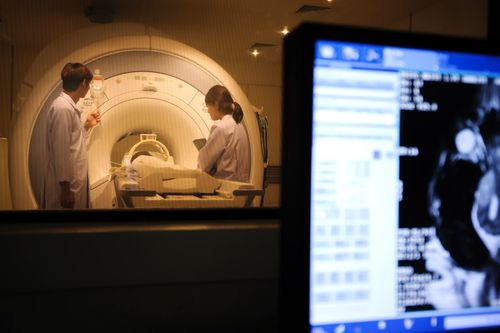Brains At Rest Function The Same As Active Brains; Mental Health Research Will Benefit

A brain at rest works much like a brain put through tasks, which will make it easier for scientists to study severe mental illnesses. Researchers from Rutgers University-Newark published their findings in the journal Neuron, which reveal for the first time how the brain’s networks function through dozens of tasks in a similar way to its resting state.
“It is easier to analyze a brain at rest,” said Dr. Michael Cole, an assistant professor at the Center for Molecular and Behavioral Neuroscience, in a press release. “We can now observe people relaxing in the scanner and be confident that what we see is there all the time”
Cole and his colleagues conducted the study using functional magnetic resonance imaging (fMRI), which allowed them to watch different parts of the brain light up when stimulated, or dim when unused. Initially, Cole wondered if the brain had to reorganize itself every time it had to work through a new task.
“If that had been the case, we would have had less hope that we could understand mental illness in our lifetime,” Cole said. “Now scientists can better hone in on the possible causes of mental illness.” Now that they know they can observe a patient with severe mental illness in an fMRI machine while they are at rest, it will make the process easier. Cole believes scientists should investigate if connections in the prefrontal cortex (PFC) are different for people who have severe mental illnesses.
The PFC is what weighs the outcomes, forms judgments, and controls impulses and emotions inside the brain. While teenagers are still growing and developing, their hormones along with the maturity rate of their PFC, dictate many of their impulse controls and lack of consequence-related thinking. It’s also the part of the brain that helps people sympathetically understand one another, which is why understanding how the PFC connects in people with severe mental illness would be a focal area of research.
According to the National Institutes of Mental Health, there are an estimated 26.2 percent of Americans diagnosed with a mental disorder, which is about one in four adults. Approximately 2.4 million adults in America have schizophrenia. It often appears in males in their late teens or early 20s, while women generally develop the disorder in their 20s or early 30s.
If the researchers are able to use the results for further research on mental illnesses, then they'll be able to "finally say something fundamental about what’s different about the brain’s functional network in schizophrenia and other conditions,” Cole said.
Source: Cole MW, Bassett DS, Power JD, Braver TS, and Peterson SE. Intrinsic and Task-Evoked Network Architectures of the Human Brain. Neuron. 2014.
Published by Medicaldaily.com



























